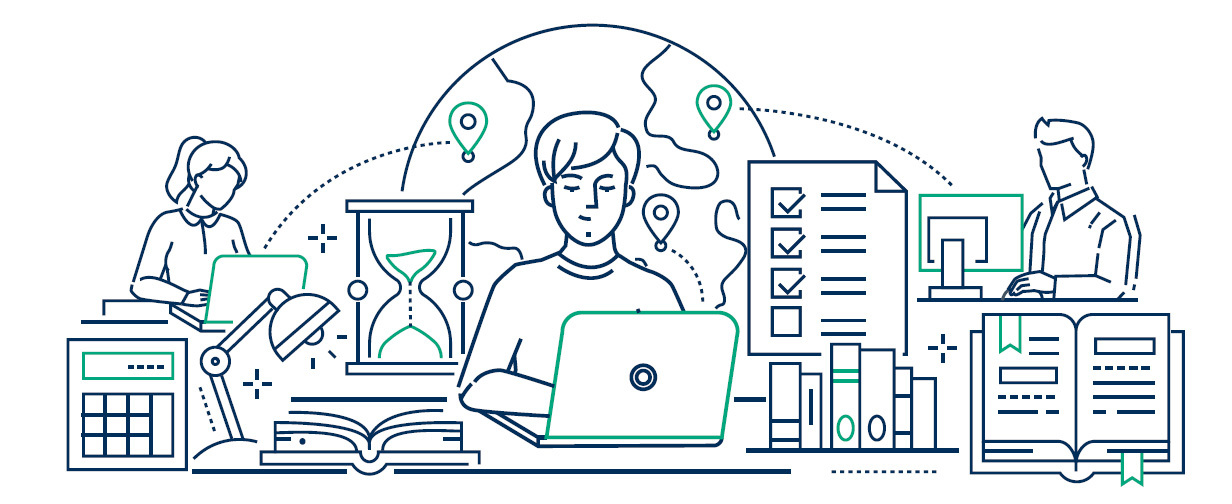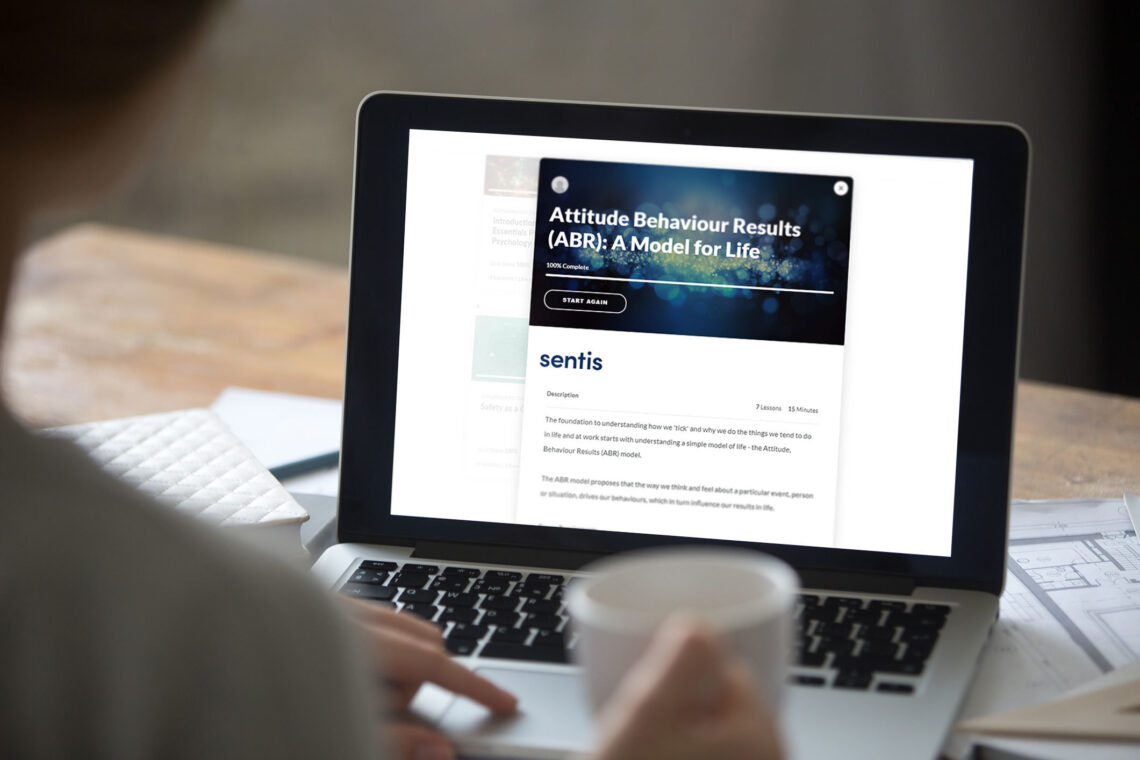When thinking about e-learning, it’s easy to fall prey to the idea that it’s a tick-and-flick training solution where your team simply sit at their desks and wait for time to pass as they complete module after module. But when you’re considering investing the time and resources required to implement an e-learning program to improve your organisation’s safety culture maturity, it’s crucial to ensure that you select the most effective program for your needs. Otherwise, you risk wasting your investment on an engagement that serves little purpose beyond a source of informative entertainment.
The problem that arises, however, is that unlike traditional face-to-face training programs, it can be difficult to differentiate between effective and ineffective e-learning programs. While there are a range of factors that can help you make an evaluation, such as the quality of material being presented or the format that it’s being delivered in, the real measure of success for an e-learning initiative comes down to one simple question—how effective is it going to be in the long run?
Start with the end in mind—is the program designed to drive lasting change?
You see, at the core of it all, the purpose of investing in any type of safety training is to ensure that it has a lasting impact on the behaviour of your people. This means the program needs to be designed from the ground up with the strategic objective being the active embedding of key learning. Otherwise, any changes in your team will simply degrade over time as your organisation’s culture reverts right back to where it started.
To help you secure your investment in your people, here are a few key factors to look out for when evaluating digital training programs:
- Is the program based on a proven learning methodology?
- How engaging is the material that’s being presented?
- What strategies are in place to ensure that learning is effectively embedded?

Is the program based on a proven learning methodology?
The effectiveness of any type of training program is underlined by the educational methodology or framework that it’s based on. And, it’s important to note that when it comes to digital delivery, this has to differ from a traditional face-to-face approach.
So, when evaluating digital training programs, get clear on exactly what learning frameworks were utilised by the instructional designers and how they were leveraged to contribute to better outcomes for participants. In doing so, you can be confident that the program material has been structured in a way that’s designed to serve your people best. When evaluating options, consider the following:
- Has the program methodology been designed intentionally?
- Does it account for the neuroscience of training transfer? And is the design based on recent research in this area?
- Does the learning platform itself demonstrate use of best-practice methodology?
If a provider can’t answer these questions, there’s a strong chance that they’re either delivering a face-to-face program that’s been hastily retrofitted into an ‘online’ version, or that the learning platform itself is outdated and acts as little more than a content delivery service.
How engaging is the material that’s being presented?
Despite the quality of content presented in a program, it’s practically impossible to achieve the positive results you’re after if your team aren’t actively engaged during training sessions. That’s why it’s crucial to evaluate how the material is being presented to ensure that your team’s attention stays captivated from start to finish. Otherwise, you run the risk of your team disengaging and your digital training sessions turning into another tick-and-flick compliance activity.
Online program delivery has become much more sophisticated in the last decade, and there’s lots of research into the science of motivation, attention and brain engagement in a digital environment. Put simply, old and clunky learning platforms that are text heavy, long or arduous to complete aren’t brain-friendly, which is why they’ll disengage your team quickly. So, while the quality of content is important, make sure to also look for aesthetically pleasing and highly interactive programs that present information in small, micro-learning blocks. This will ensure participants not only remain engaged, but also increases the likelihood that they transfer their learning back into the workplace.
What strategies are in place to ensure that learning is effectively embedded?
Even if your team stay engaged throughout every session, the reality is that without being given an opportunity to apply the knowledge they’ve gained, all of their learning will simply dissipate over time. This is especially important when you take into account the hands-off nature of virtual training as compared to its face-to-face counterpart. It’s crucial to ensure that measures have been put in place to provide participants with active opportunities to apply and reinforce the concepts that they’re learning . Consider the following:
- Does the program have a tangible ‘so what?’ component that helps participants transfer learning into applied behaviour in the workplace?
- Are participants encouraged to take personal responsibility for applying their learning?
- Does the program provide tools and resources that can support embedding and shared ownership?
Given that our brains only retain about 10% of the information we receive in a single learning event, considering how the program supports an ongoing focus on learning application is critical to long-term success.
So, we’re back to the same bottom-line requirement: the training program needs to be strategically designed from the ground-up to incite lasting change across your organisation. Otherwise, you run the risk of driving short-term safety performance improvements that simply revert back to the baseline over time. The good news is that here at Sentis, driving deep-rooted cultural change that stands the test of time is exactly what we pride ourselves in doing.

Flipping the script with e-learning
When we first looked to provide clients with an online option for engaging their people with our renowned safety culture development programs, it wasn’t a decision that we took lightly or rushed into. Our face-to-face programs work because they merge best practice in instructional design with our unique ability to make complex concepts simple. Delivered by a team of highly engaging facilitators, our programs include a mix of role-play, storytelling, interactive discussion and experiential activities to drive lasting changes across every level of an organisation.
When we designed our online delivery option, it was important that it remained every bit as engaging, powerful and ‘Sentis-like’ as our face-to-face experience. So, what does a team of psychologists, researchers and organisational analysts do? We go to the research and seek out the world leaders in online program delivery.
After thorough investigation, we found a learning framework that far exceeds traditional online learning: the flipped learning pedagogical model. That is, a learning framework that involves first introducing participants to key learning materials, followed by interactive teaching and coaching sessions to give them the opportunity to not only understand the program material, but to also actively embed it.
We start by exposing participants in our digital programs to key safety-related concepts and educational content through an interactive, self-paced online platform that allows each participant to digest the program material at a pace that’s perfectly aligned with their learning requirements.
Following this self-paced learning session, we then move on to a live webinar session with our experienced facilitators that focuses on the real-world applications of the key concepts they’ve learned. This two-pronged approach allows us to ensure that not only are the key points clearly and effectively taught in a manner that’s tailored to each participant, but that they’re also actively participating in the process of applying what they’ve learned to embed key concepts and reinforce behavioural changes that will last. In turn, this leads to higher levels of engagement, increased information retention and accelerated behavioural changes across the entire cohort.
While face-to-face engagements are still highly effective due to the nature of having personalised contact and direct-communication with participants, our equally effective digital programs are the perfect alternative for organisations looking to incite cultural changes with the added level of convenience that comes with working through a digital medium. That’s because the very nature of digital distribution allows us to break up our training engagements into self-paced intervals spread across longer periods of time, making it easier for your team to complete them without needing to block out several days at a time, strictly for training. Coupled with the financial savings that would have otherwise been invested into running a face-to-face program, such as a training venue or catering requirements, a digital learning program gives you the opportunity to drive positive changes for your people at a reduced financial and administrative investment.
Effective e-learning starts with the end in mind
To bring it all together, when thinking about investing in a digital training program to improve your safety performance, it can be difficult to evaluate exactly which program to invest in. That’s why it’s important to shift your attention towards the end result that you’re after—safety culture improvements that last. By starting with this end goal in mind, you can work backwards against the various training options available to you to identify the best training program for your needs.
At Sentis, that end goal of driving lasting cultural change is at the very core of who we are as an organisation and is exactly why every aspect of our e-learning programs have been strategically designed to work towards that one collective mission. We take great pride in seeing our experienced team of expert facilitators deliver a highly engaging, self-paced digital training program that is as enjoyable as it is impactful.
At the end of the day, the goal of any cultural development program across any medium isn’t just to inform and educate—it’s to drive cultural changes that last. So, don’t just look for training. Instead, look for a learning experience that is strategically designed to change individuals and organisations for the better.
To learn more about our online programs, just get in touch with us today and our team will walk you through exactly how we can help your business thrive.




